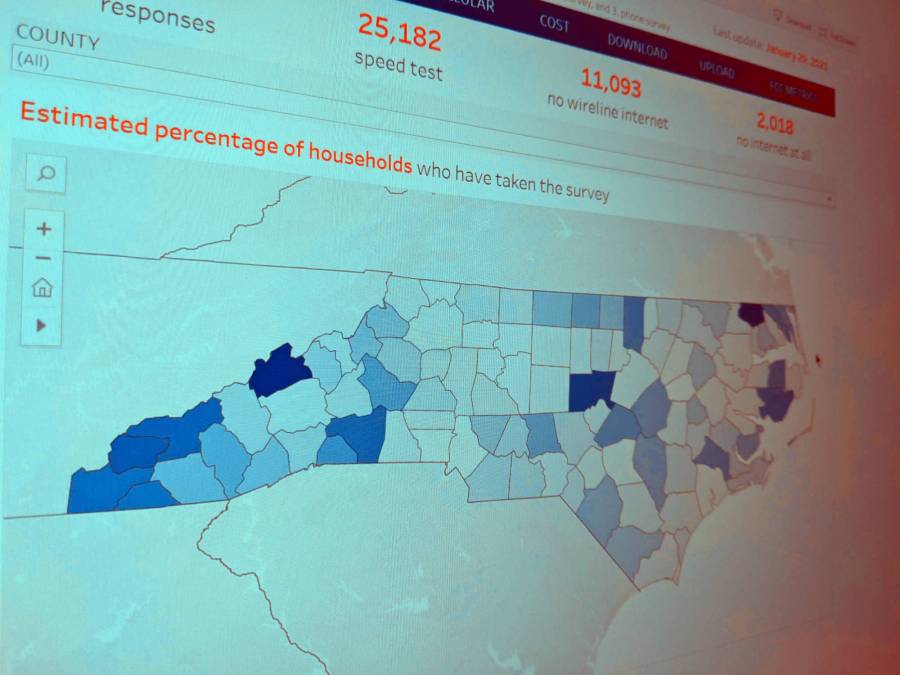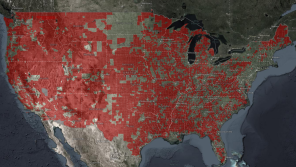North Carolina is preparing for a $1 billion broadband push

Despite nearly 70,000 North Carolina households and businesses conducting internet connection speed tests as part of a year-long survey, the state “still has a lot more to do” before it can begin a $1 billion broadband expansion, state officials said Wednesday.
The survey, launched in July 2020 by North Carolina State University’s Friday Institute, found that at least 450,000 households, or roughly 10% of the state, lacks adequate broadband coverage.
Ben Shelton, a project manager at the state’s Center for Geographic Information and Analysis, said Wednesday the data offers a fresh perspective on the digital divide compared to what’s shown by the Federal Communications Commission, which has been criticized for letting internet service providers overstate their coverage areas.
North Carolina’s surveys, which are given online or over the phone, ask residents to share information about the internet connections from their homes or businesses, and to take a broadband speed test that compares the area’s actual internet speeds to those advertised by providers. While those results have been more accurate than the FCC’s data, North Carolina doesn’t have enough data yet, Shelton said.
While FCC Acting Chairwoman Jessica Rosenworcel has acknowledged that the agency’s data is flawed, it’s currently up to states to collect their own data if they want a more accurate measure of broadband availability. Virginia and Georgia have recently made progress on initiatives to concoct their own broadband coverage maps, and North Carolina isn’t far behind, Shelton said.
“What we’re really trying to do is drill down to a household level, get a lot more granular with our information collection and how we present that data to the public,” Shelton said during a National States Geographic Information Council event on Wednesday. “What we’re trying to do is get that information ourselves so that we’re not reliant on the providers to highlight those areas. We want to be able to tell that ourselves.”
North Carolina has been active during the pandemic in expanding its broadband programming, Shelton said, highlighting a new Office of Digital Equity and Literacy that’s tasked with boosting digital literacy and making home internet service more affordable.
The state’s broadband expansion efforts over the past four years have been executed through a grant called the “Growing Rural Economies with Access to Technology” program that provides $15 million a year for service providers to expand service to rural areas.
But with likely more than $1 billion in funding set aside for broadband for fiscal year 2022 — much of which will be federal stimulus funding — ensuring North Carolina has accurate coverage data is more important than ever, Shelton said.
“By being able to direct people to our community surveys and where that gap is in the FCC data, we’re at least trying to flush things out at a location level,” Shelton said. “So the challenge now in preparing for these new American Rescue Plan dollars is figuring out how to get even more granular, because we anticipate future grants to be location level grants as well.”
Using the broadband survey, the state is able to get on-the-ground information from residents, filling in the gaps between the FCC and “what people on the ground are really telling us,” Shelton said.
North Carolina’s broadband infrastructure office runs a program to assess each census block for available broadband types — including fiber, fixed-wireless and satellite — and how fast those technologies could be.
The product of that work is a map to inform where federal broadband funding can go after the state approves its budget. Shelton said officials are trying to make sure they don’t double-up funding for regions that’ve already received federal broadband grants, and tracking where funding goes will be “critical” to future initiatives.
“We’re using this focus on broadband through the pandemic to highlight the need for statewide data sets,” he said.






